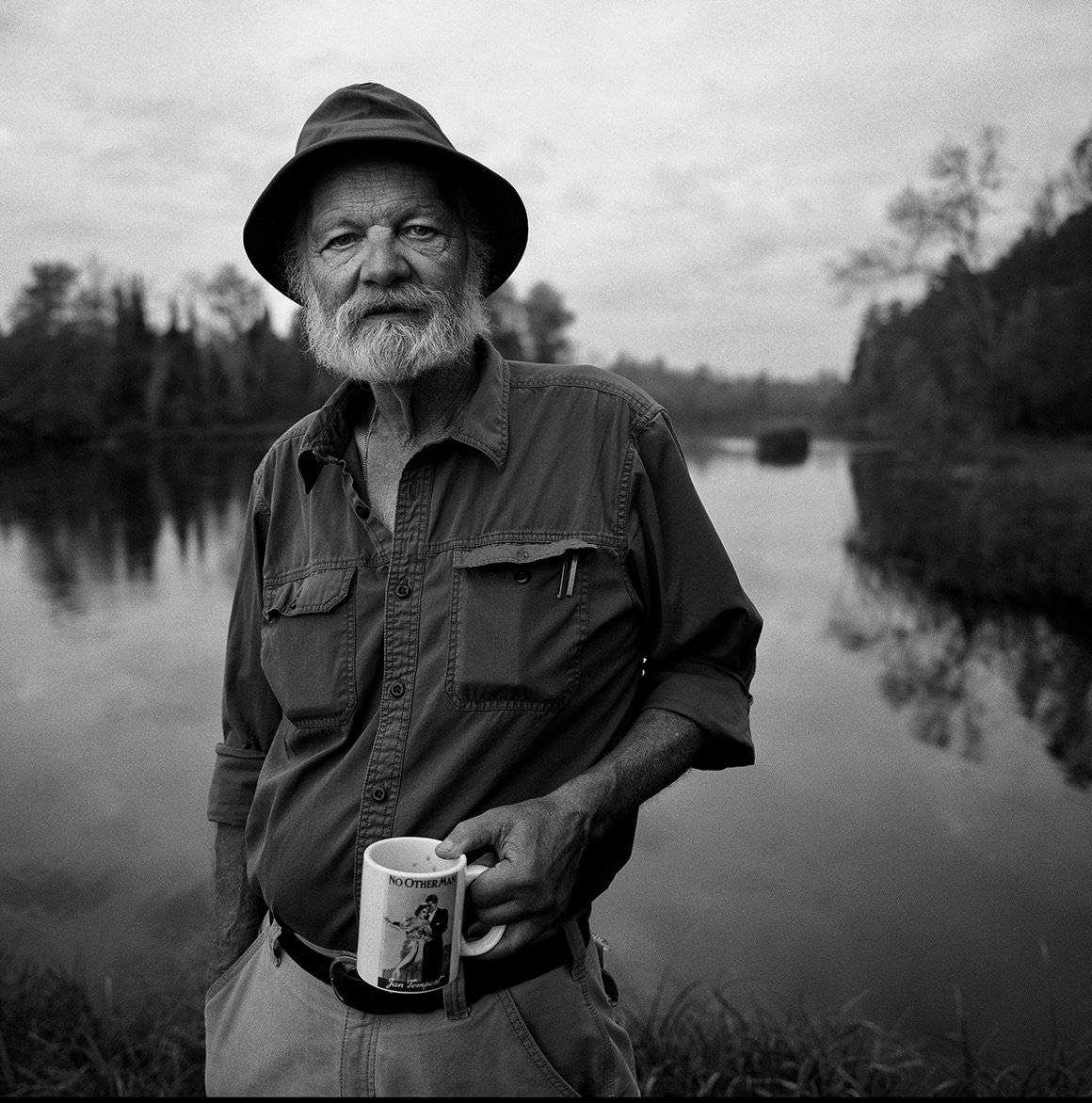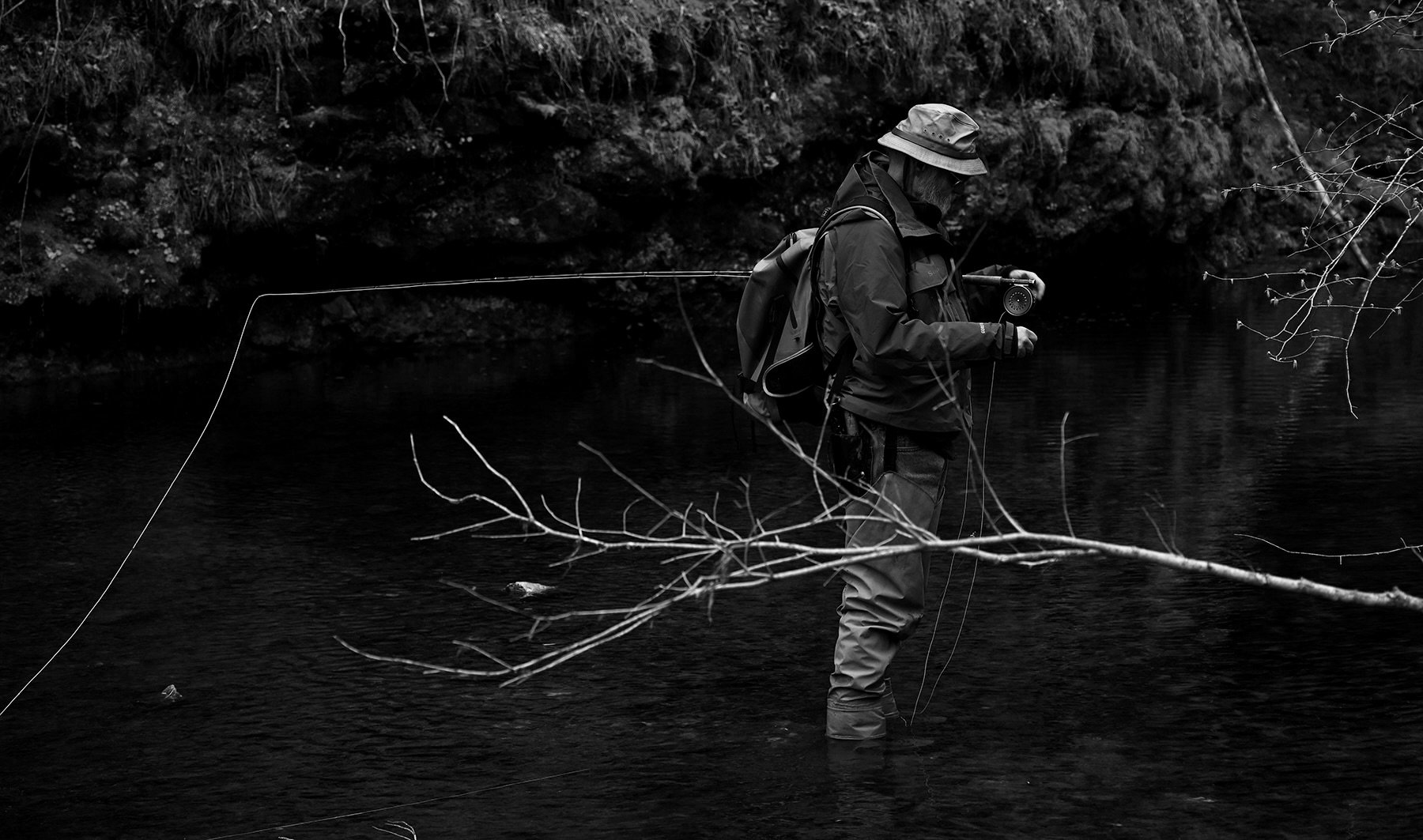
John Gierach
Photos Courtesy of www.dvorakphotography.com
1. Choice of equipment Rods, reels, fly lines, fly floatants, clothes, glasses, and other useful items.
I’ve used rods as light as 4-weight and as heavy as 8-weight for dry flies, depending on the water and the fish, but when I think of a dry fly rod I usually picture a 4- or 5-weight around 8-feet long, preferably split bamboo, although I have some good graphites as well. The reel hardly matters: something to match the rod with a light enough drag. For most dry fly fishing I like a double taper line, although for bigger flies and longer casts a weight forward can come in handy. I use Loon brand floatant that I’ll tough up with some kind of dry shake from time to time. I wear prescription polarized sunglasses unless it’s too dark. Clothes and other items depend entirely on the situation.
2. Leader material, build-up, length and knots.
I tie leaders using Maxima for the first two thirds of the taper and Rio for the rest using a formula I got years ago from A.K. Best. I think the stiffer butt and limp forward section turn the leaders over well.
3. Approach and stealth.
Approach and stealth depend on the water and light. In spooky conditions I’ll make long casts, but in fast water and dim light I can damned near stand on top of the fish. Half an hour on the water shows me what I have to do.
4. Reading the water.
If trout are rising, I at least know where they are and have to read the currents to get a good drift. If there are no rises, I have to guess where a fish might be. It has a lot to do with my mood. Sometimes I’ll cherry-pick the best-looking water and other times I’ll fish almost every inch of a stream. Often when I do that fish come out of surprising places that I might otherwise have passed by. Few of us know as much about trout as we think we do.
5. Casting ability which casts are essential.
I’m an instinctive caster and use whatever elements of the formal casts I need to get a good drift. I think it’s best to be inventive and flexible.
6. Entomology, what should we know.
I’m less of an entomologist than I once tried to be. I usually do best with simple, nondescript flies in a variety of sizes and think size is the most important element of a pattern. That said, there are certain hatches that I have specific flies for – Pale Morning Duns. Blue-wing Olives, Green Drakes and so on. That’s partly because I think they’re necessary and partly because I just like the flies.
7. Rise forms Can they tell us something?
Yes, but not always as much as we think. When trout are showing on top, all it tells me is that they’re feeding in the last inch or two of water near the surface. If they’re making quiet dimples and I can’t see any bugs, I’ll guess something like Spinners or ants. If I can see flies on the surface I can make a good guess at what they are. I usually try the dry fly first, but after a good try (say, good drifts with two different patters) I’ll try an unweighted nymph or emerger that sinks below the surface a little and that’s often the solution.
8. Fly selection, Size, shape, materials, which flies are essential.
Your fly selection will be based on what you know about your home water, informed by your own ideas and idiosyncrasies. I think the most important thing about a fly is size, followed in no particular order by silhouette and color. I tend toward natural materials because they’re traditional and I like the looks of them, but I’ll use synthetics if I think there’s a good reason to. My favorite fly when I was starting out was the Adams and although I’ve made some detours since, I keep coming back to it. It’s hard to argue with a fly pattern that’s been catching for a hundred years.
10. Upstream or downstream?
I’ll cast upstream, downstream or sideways; whichever direction gets me the drift I want. If I’m putting action on a dry fly, I usually want to be casting downstream, and there’s no alternative to casting downstream from a drift boat.
11. Fighting fish.
All things being equal, I try to use the heaviest tippets I can get away with so I can play trout quickly. The less time you spend playing a fish, the less likely you are to lose it and the better its chances for survival when you release it.









